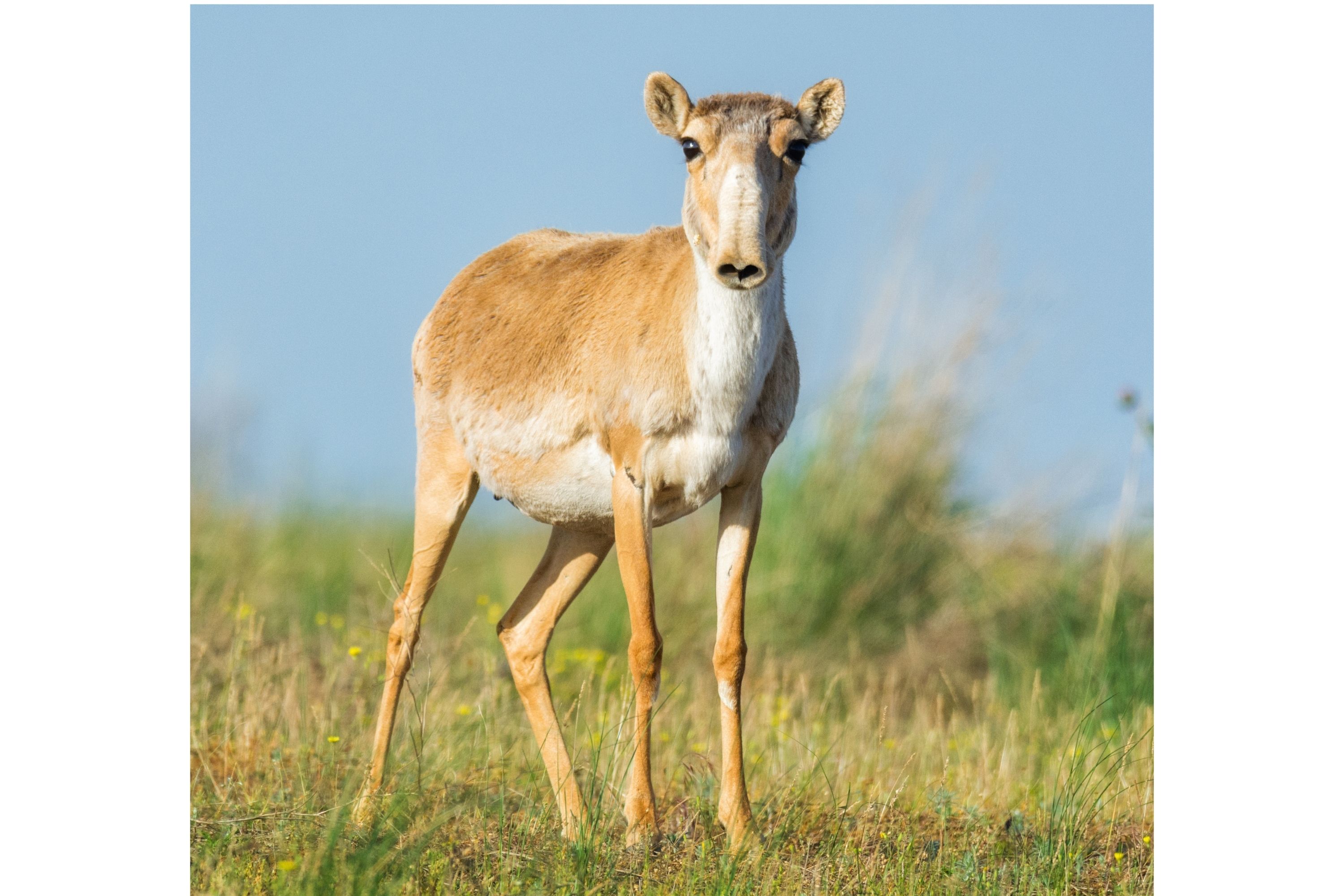Saiga antelope
(Saiga tatarica)

Description
The saiga antelope (Saiga tatarica), or saiga, is a critically endangered antelope which during antiquity inhabited a vast area of the Eurasian steppe spanning the foothills of the Carpathian Mountains in the northwest and Caucasus in the southwest into Mongolia in the northeast and Dzungaria in the southeast. During the Pleistocene, they also occurred in Beringian North America and the British Isles. Today, the dominant subspecies (S. t. tatarica) is only found in one region in Russia (in the Republic of Kalmykia and Astrakhan Oblast) and three areas in Kazakhstan (the Ural, Ustiurt, and Betpak-Dala populations). A portion of the Ustiurt population migrates south to Uzbekistan and occasionally Turkmenistan in winter. It is extirpated from China, Ukraine, and southwestern Mongolia. The Mongolian subspecies (S. t. mongolica) is found only in western Mongolia. The saiga stands 61-81 cm (24-32 in) at the shoulder, and weighs 26–69 kg (57-152 lb). The head-and-body length is typically between 100 and 140 cm (39 and 55 in). A prominent feature of the saiga is the pair of closely spaced, bloated nostrils directed downward. Other facial features include the dark markings on the cheeks and the nose, and the 7-12 cm (3-4+1⁄2 in) long ears. During summer migrations, a saiga's nose helps filter out dust kicked up by the herd and cools the animal's blood. In the winter, it heats up the frigid air before it is taken to the lungs. The coat shows seasonal changes. In summer, the coat appears yellow to red, fading toward the flanks. The Mongolian saiga can develop a sandy colour. The coat develops a pale, grayish-brown colour in winter, with a hint of brown on the belly and the neck. The ventral parts are generally white. The hairs, that measure 18-30 mm (11⁄16-1+3⁄16 in) long in summer, can grow as long as 40-70 mm (1+1⁄2-2+3⁄4 in) in winter. This forms a 12-to-15-centimetre-long (4+1⁄2 to 6 in) mane on the neck. Two distinct moults can be observed in a year, one in spring (April to May) and another in autumn (late September or early October to late November or early December). The tail measures 6-12 cm (2+1⁄2-4+1⁄2 in). Only males possess horns. These horns, thick and slightly translucent, are wax-coloured and show 12 to 20 pronounced rings. With a base diameter of 25-33 mm (1-1+5⁄16 in), the horns of the Russian saiga measure 28–38 cm (11-15 in) in length; the horns of the Mongolian saiga, however, reach a maximum length of 22 cm (8+11⁄16 in).
Taxonomic tree:







